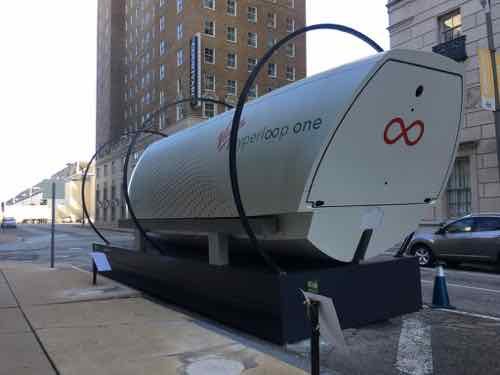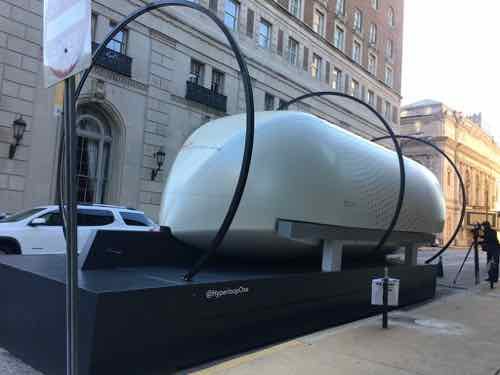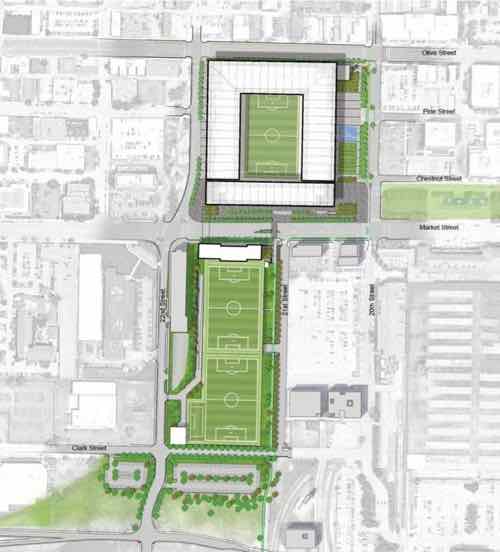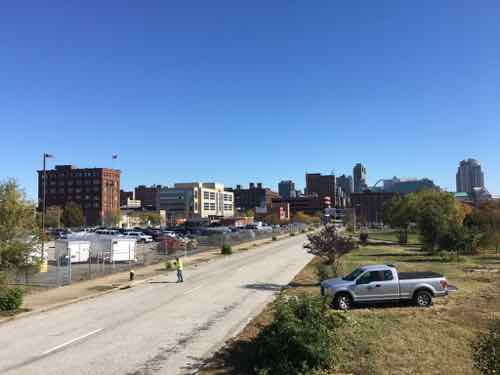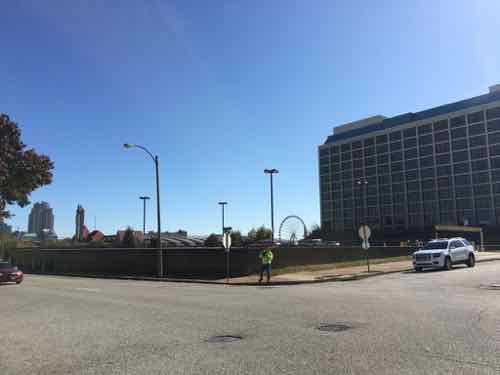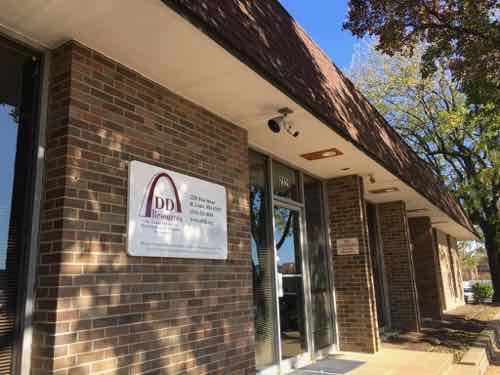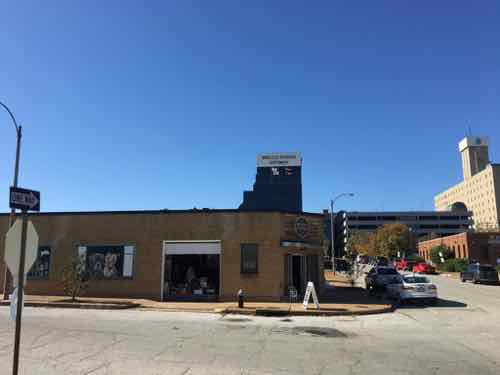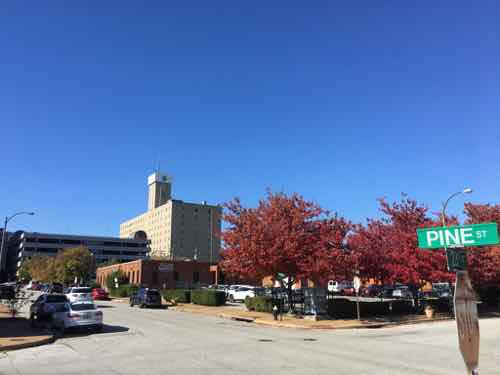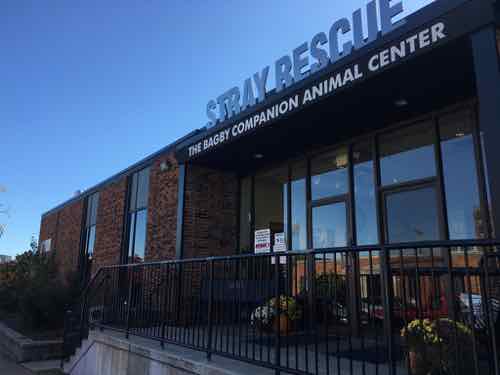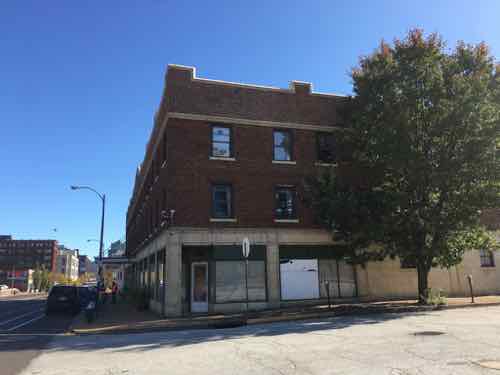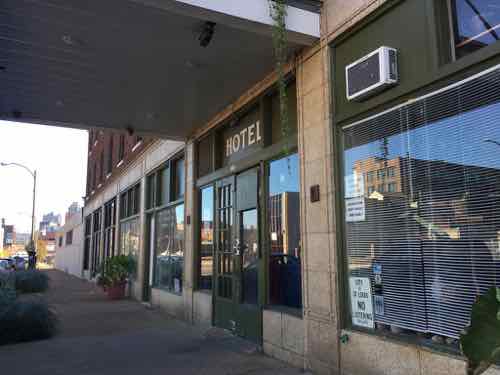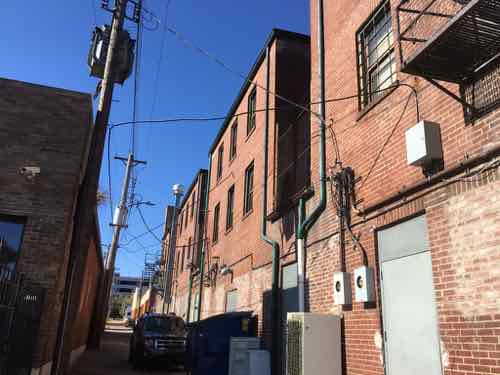Sunday Poll: Was Razing Mill Creek Valley the City’s Only Option?

On February 16, 2013 STL250 shared a 1956 photo of Mayor Raymond Tucker looking at Mill Creek Valley, with the following caption:
This Day in St. Louis History, February 16, 1959:
Mill Creek Valley becomes “Hiroshima Flats”With $7 million from a 1955 St. Louis Civic Progress bond issue and $21 million in federal funds, the Land Clearance Redevelopment Authority began clearing the 454 acres of Mill Creek Valley, from Lindell on the north and Scott on the south, and Twentieth on the east and Grand on the west. The historically black area’s homes and dilapidated buildings were razed for 132 acres of industrial sites, 26 acres of commercial, 83 acres of residential, a 22 acre extension of St. Louis University across Grand, and the Ozark Expressway. 1,772 families and 610 individuals were displaced, some of the poorest in the city, and almost all black. Slow redevelopment after the rather quick destruction gained the giant empty fields of land the nickname of “Hiroshima Flats.” The Mill Creek Valley site is now covered by the portion of St. Louis University east of Grand, Harris Stowe State University, and the Wells Fargo Advisors buildings.
Here’s more:
By World War II, Mill Creek’s tenements and faded town houses were home to nearly 20,000 people, many of them poor blacks who had migrated north from the cotton fields. More than half the dwellings lacked running water, and 80 percent didn’t have interior bathrooms.
Tucker proposed knocking over nearly everything and starting over. In 1955, city voters overwhelmingly approved a $10 million bond issue for demolition, on the promise that the federal government would reimburse most of it. The local NAACP endorsed the idea. Work began on Feb. 16, 1959, at 3518 Laclede Avenue, where a headache ball smashed a house that dated to the 1870s. (Post-Dispatch)
From an upcoming book on Mill Creek Valley:
On December 16, 1950, my grandmother purchased a house from her landlords, Richard and Betty Bennett, at 2649 Bernard Street in Mill Creek for $1,400. She had saved the $100 down payment from her meager salary. Twenty years after leaving Earl, Arkansas, for St. Louis, she would finally have a home of her own with her son, his wife, and their eight children. She would be the last in a long line of owners of the hundred-year-old Italianate- style two-story dwelling.
My grandmother was unaware of the city’s plans when she bought her house in the neighborhood where she had lived since leaving the South. However, politicians, realtors, and religious and business leaders knew what the future held for this 450-acre neighborhood. Egged on by a series of derisive articles in the local media, the city was moving to deem the area “blighted.” The designation would pave the way for the eventual erasure of an entire African American community to make way for an interstate highway to the suburbs.
There you have it, an overview of Mill Creek Valley. It was sixty-one years ago today that demolition began, so that’s the subject of today’s poll.
This poll will close at 8pm tonight.
— Steve Patterson
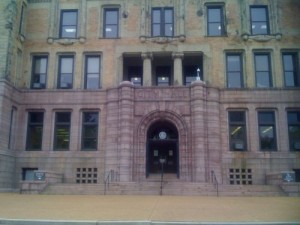 The
The 